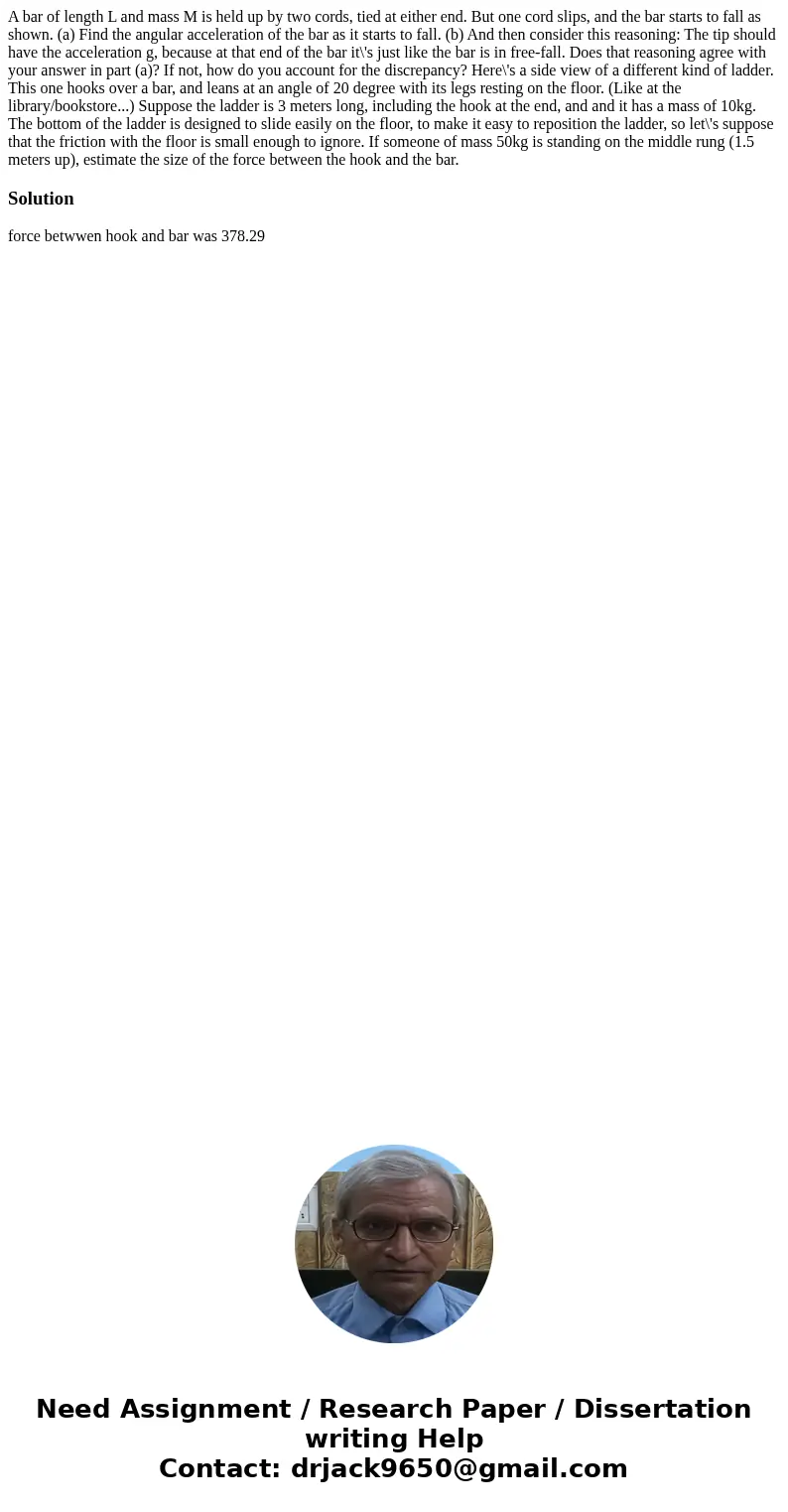A bar of length L and mass M is held up by two cords tied at
A bar of length L and mass M is held up by two cords, tied at either end. But one cord slips, and the bar starts to fall as shown. (a) Find the angular acceleration of the bar as it starts to fall. (b) And then consider this reasoning: The tip should have the acceleration g, because at that end of the bar it\'s just like the bar is in free-fall. Does that reasoning agree with your answer in part (a)? If not, how do you account for the discrepancy? Here\'s a side view of a different kind of ladder. This one hooks over a bar, and leans at an angle of 20 degree with its legs resting on the floor. (Like at the library/bookstore...) Suppose the ladder is 3 meters long, including the hook at the end, and and it has a mass of 10kg. The bottom of the ladder is designed to slide easily on the floor, to make it easy to reposition the ladder, so let\'s suppose that the friction with the floor is small enough to ignore. If someone of mass 50kg is standing on the middle rung (1.5 meters up), estimate the size of the force between the hook and the bar. 
Solution
force betwwen hook and bar was 378.29

 Homework Sourse
Homework Sourse